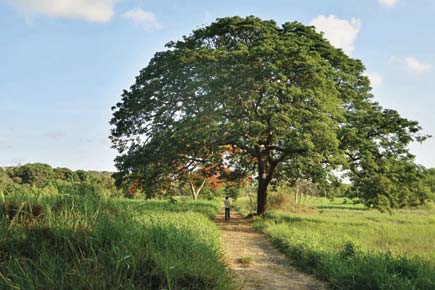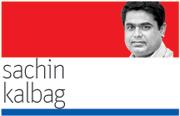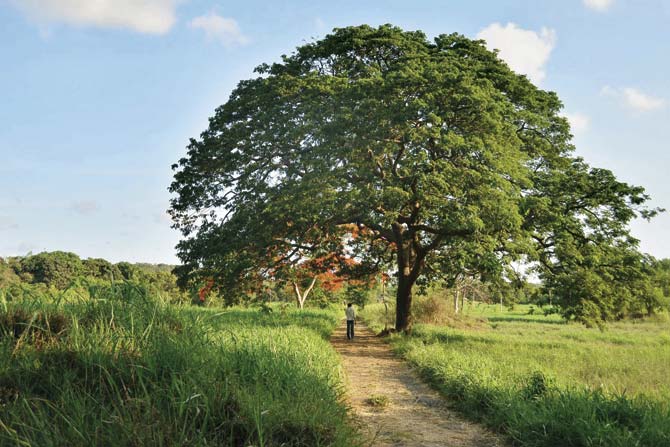Here are two quiz questions that many car owners in Mumbai should be able to answer: If you travel from the Dahisar entry point on the Western Express Highway right up to Mahim causeway, how many trees would you encounter along the way? Second question: If you take the same route, how many new real estate projects would you see dotting the way?

 Here are two quiz questions that many car owners in Mumbai should be able to answer: If you travel from the Dahisar entry point on the Western Express Highway right up to Mahim causeway, how many trees would you encounter along the way? Second question: If you take the same route, how many new real estate projects would you see dotting the way?
Here are two quiz questions that many car owners in Mumbai should be able to answer: If you travel from the Dahisar entry point on the Western Express Highway right up to Mahim causeway, how many trees would you encounter along the way? Second question: If you take the same route, how many new real estate projects would you see dotting the way?
ADVERTISEMENT
For some reason, the people that run this city (and even many of those that don’t) believe that the trees and development are mutually exclusive, and that the latter has always to be at the cost of the former. This is why you will hardly see trees along the Western Express Highway, while there are at least 50 new real estate projects between Dahisar and Andheri. It is this thinking that is driving a myopic administration to go ahead with building a car shed for the Mumbai Metro’s third phase at the cost of at least two thousand trees inside Aarey Colony, one of the city’s last remaining green lungs.

The deforestation of Aarey, unlike the Amazon’s or Congo’s, may not end up affecting populations thousands of kilometres away, but it will definitely have an impact on the people of Mumbai. Besides, it will have a significant direct impact on the animals of Aarey, led by the formidable leopard. File pic
The common argument that is put forth is that if the city’s infrastructure has to be developed, it has to be at some cost to the ecology. After all, hasn’t this been the pattern that humans have employed for generations to reach where we have reached? It is a seemingly fair argument, perhaps even rational; but it is inherently flawed. There are many good reasons that development cannot be at the cost of the environment alone, as is often the case in Mumbai, where depleting mangroves have resulted in often disastrous waterlogging and flooding that destroy homes, kill businesses, and ruin families.
In a major study published in Nature in 2012, researchers observed how, in the Amazon and Congo basins the world’s richest sources of rainforests rainfall and logging of trees have a direct correlation. The study said that at the current rate of deforestation, the Amazon could see rainfall depleting by up to 21 per cent by 2050, leading to cataclysmic consequences for not only Brazil and Congo, but even to countries thousands of kilometres away.
The deforestation of Aarey, unlike the Amazon’s or Congo’s, may not end up affecting populations thousands of kilometres away, but it will definitely have an impact on the people of Mumbai. Besides, it will have a significant direct impact on the animals of Aarey, led by the formidable leopard. As environmentalists have repeatedly pointed out, the fauna inside Aarey are absolutely essential to maintain the precarious ecosystem that keeps a check on pollution levels in the city.
Adherence to environment norms ranks pretty high for the Japanese consortium that plans to extend a loan to Phase 3 of Mumbai Metro. It is precisely the reason why, in its submission to the lending body, the Mumbai Metro Rail Corporation (MMRC) blatantly misrepresented and downplayed the presence of wildlife in the area. The loan is not a small amount; it is nearly R5,000 crore. It is better to lie, therefore, than approach some other agency that is not so strict with environment regulations.
But more than just fooling the Japanese, the MMRC is pulling a fast one on Mumbaikars. Activists and well-meaning citizens have given the MMRC alternatives to build the car shed. It is a misconception that activists, and indeed this newspaper with its extensive campaign to save Aarey, are against building the car shed. Nothing can be farther from the truth. It is well established that this city needs public transport infrastructure that will go a long way in reducing usage of private vehicles and therefore keep a check on pollution. Therefore, the argument that environmentalists are stalling the city’s growth is a biased exaggeration. In this case, development versus ecology is a false equivalence.
In their landmark book on the biodiversity of Aarey, researchers Zeeshan Mirza and Rajesh Sanap list 76 species of birds, 86 species of butterflies, 13 species of amphibians, 46 species of reptiles, five types of scorpions, 16 species of mammals, and 34 varieties of wildflowers. This spread alone should make any development agenda by destroying the fine ecology a big no-no. Instead, there is an uncharacteristic hurry by the MMRC to get the car shed developed in an area whose destruction could well mean the destruction of a way of life for the tribals in the area, and in all certainty, will have negative consequences for the city.
Aarey should be saved, not because the environmentalists are shouting hoarse, but because the city is crying loudly to keep its largest patch of green alive.
Sachin Kalbag is editor, mid-day. He tweets at @sachinkalbag
 Subscribe today by clicking the link and stay updated with the latest news!" Click here!
Subscribe today by clicking the link and stay updated with the latest news!" Click here!






